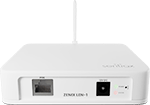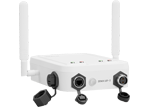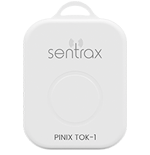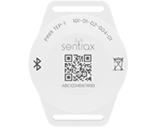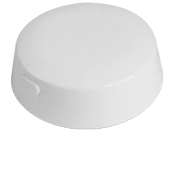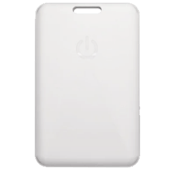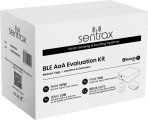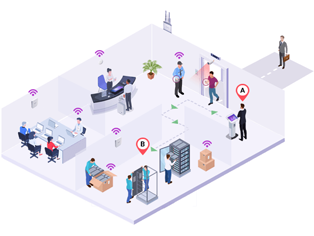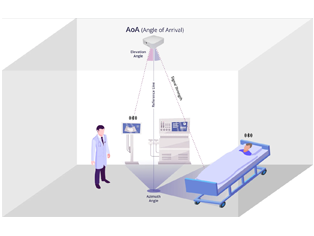- Scanners/Locators
BLE RSSI Scanners & Locators
BLE (RSSI) based indoor locator and gateway that provides proximity positioning, presence & environmental sensing.
BLE (RSSI)-based indoor locator and gateway that provides proximity positioning.
BLE (RSSI)-based outdoor locator and gateway that provides proximity positioning with Wi-Fi, LTE connectivity, and GPS positioning.
BLE AoA Scanners & Locators
BLE (AoA)-based indoor locator and gateway that provides precise submeter location tracking.
BLE (AoA)-based outdoor locator and gateway that provides precise sub-meter location tracking.
- Beacons/Tags
BLE (AoA) Asset Tag with Multi-Sensors
Hybrid BLE (AoA) & (RSSI) Asset Tag
Smart Badge BLE (AoA) Tag with Temperature Sensor
Outdoor Anchor BLE Beacon Tag with Internal Temperature Sensor
BLE (RSSI) Wearable Bracelet Beacon Tag for Persons Positioning
Indoor Anchor BLE Beacon Tag with Temperature Sensor
- Software
SENTRAX’s versatile platform for asset and personnel management, available in API, on-premise, and cloud-based versions.
Simplifies and enhances the configuration & management of BLE beacon tags, available on both Android and iOS.
Provides a versatile set of functionalities to support location-based systems in various smartphone applications, facilitating indoor positioning.
- Evaluation Kit
BLE (RSSI) Evaluation Kit for real-time proximity positioning and tracking of nearby assets and personnel. Try this evaluation kit for deployment and testing.
BLE (AoA) Evaluation Kit for precise real-time positioning and tracking of assets and personnel. Try this evaluation kit for deployment and testing.
Guide to Choosing the Right RTLS Technology for Your Healthcare Facility

Selecting the optimal Real-Time Location System (RTLS) for your healthcare facility involves balancing accuracy, cost, scalability, and integration. Below is a structured approach to help you decide:
1. Assess Your Facility’s Needs
Start by identifying your priorities:
Accuracy Requirements: Do you need sub-meter precision (e.g., locating infusion pumps in real-time) or broader zone-level tracking (e.g., patient flow)?
Use Cases: Asset tracking, staff safety, patient monitoring, or workflow optimization?
Budget: Are there constraints that favor cost-effective solutions over high-end systems?
Facility Size: Single-site clinic, multi-building hospital, or a sprawling campus?
Existing Infrastructure: Do you have Bluetooth/Wi-Fi networks in place?
2. Compare Key RTLS Technologies
| Technology | Accuracy | Cost | Best For | Limitations |
| Bluetooth AoA | 0.1–0.5m | Moderate | High-precision tracking (e.g., crash carts, staff duress) | Requires specialized hardware |
| RSSI Beacons | 3–5m | Low | General asset tracking, patient flow | Prone to signal interference |
| UWB | 0.1–0.3m | High | Critical equipment, emergency response | Expensive; complex deployment |
3. Address Market Challenges
Cost Constraints: Opt for BLE (AoA) or RSSI if budget is tight. Sentrax’s BLE leverages existing Bluetooth infrastructure, reducing upfront costs.
Integration Complexity: Ensure the RTLS vendor offers APIs/compatibility with your EHR, nurse call, or CMMS systems.
Security: Prioritize encrypted systems (e.g., Bluetooth AoA’s directed signals reduce eavesdropping risks).
Scalability: Choose modular solutions (e.g., Sentrax) that grow with your facility.
Interference: Avoid RSSI in dense environments; UWB/AoA perform better in metal-rich areas.
4. Why Sentrax BLE (AoA) Stands Out
Precision: Delivers 0.1m accuracy for tracking high-value assets or monitoring patient movements.
Cost-Effective: Delivers 0.1m accuracy for tracking high-value assets or monitoring patient movements.
Energy Efficiency: Long-lasting tags (years vs. months with active RFID/UWB).
Security: Reduced signal spillover enhances data privacy.
Seamless Integration: Compatible with EHRs, staff safety systems, and IoT platforms.
5. Decision Framework
- High-Accuracy Needs (OR, ICU): Choose Sentrax BLE (AoA)..
- Budget-Conscious General Tracking: Deploy RSSI Beacons for non-critical assets.
- Large/Multi-Site Facilities: Prioritize scalable solutions like Sentrax.
Implementation Tips
- Pilot the technology in one department (e.g., emergency room) to test accuracy and workflow impact.
- Involve IT teams early to address integration and cybersecurity.
- Train staff on RTLS workflows (e.g., automated equipment check-in/out).
Conclusion
For most healthcare facilities, Sentrax’s BLE (AoA) strikes the ideal balance of accuracy, affordability, and scalability. It addresses critical challenges like interference and data security while enhancing operational efficiency.
Next Step: Contact Sentrax for a facility assessment or pilot program to see how AoA can transform your asset management and patient care workflows.
(Need help comparing vendors or designing a rollout plan? Ask about Sentrax’s tailored healthcare solutions!)



